We were very sad to hear the news of the passing of Richard Bawden NEAC RE RWS (1936-2024) who died on 31 May. Richard was elected to the NEAC in 2006 and was a regular exhibitor at our Annual Exhibitions. He will be greatly missed by his fellow members. Here is a tribute written by Richard’s long-time friend Richard Sorrell NEAC RBA PPRWS.
'Richard Bawden was my good friend and I shall miss his wonderfully humorous presence.
I met Richard when I was a young student in my first year at art school at Walthamstow (South West Essex Technical College and School of Art). Richard taught printmaking there and I soon came to realise that he was an excellent lino cutter.
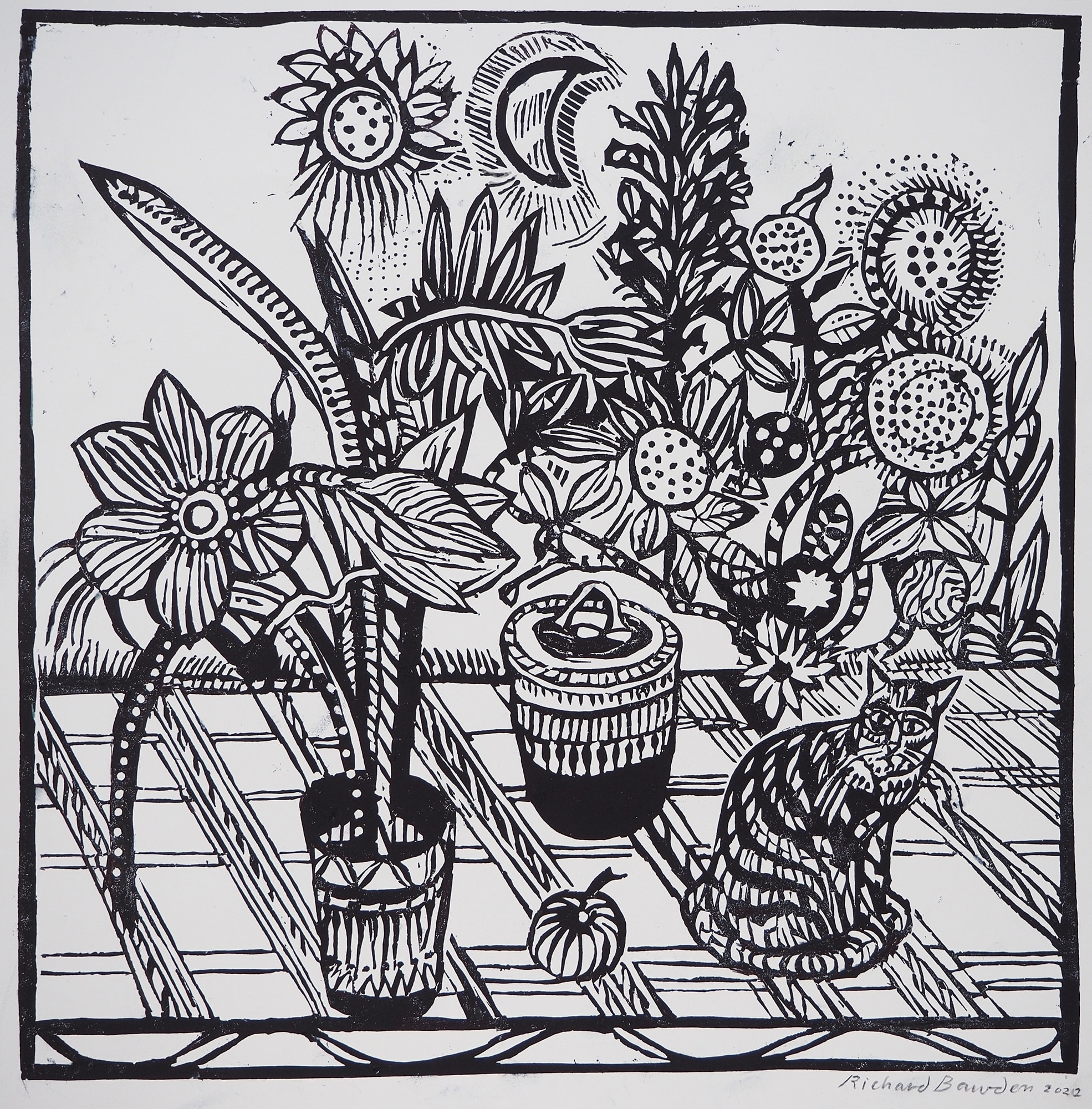
I was aware at Walthamstow of Richard's father, Edward Bawden, who had been a contemporary of my father Alan Sorrell at the Royal College of Art and had taught there at the same time as Edward Bawden in the 30s and 40s. It is not the easiest of circumstances to be an artist son of an artist: egos and identities are challenged and perhaps the more celebrated the father (or mother), the more difficult it is for the next generation. Richard dealt well with this, and perhaps his experience of the expected high standards and pressure of his early and student days made him sympathetic to his own students, treating them with kindness and encouragement.

Richard showed me how to cut lino to make prints, how to pour paint stripper onto it and rub it with a wire brush to create textures, and how to make little registration crosses so that the next plate would correspond exactly. He showed me the rudiments of etching and lithography, and how to roll up a 'nice juicy ink ' as he put it. When I was preparing my work for application to a diploma course, Richard showed me how to mark out the guide lines for a mount, and then, most impressively, how to cut the bevel mount freehand with an unswerving straight cut.
“How do you do that?” I asked.
“Well, I have big ham-like hands you see,” he said.
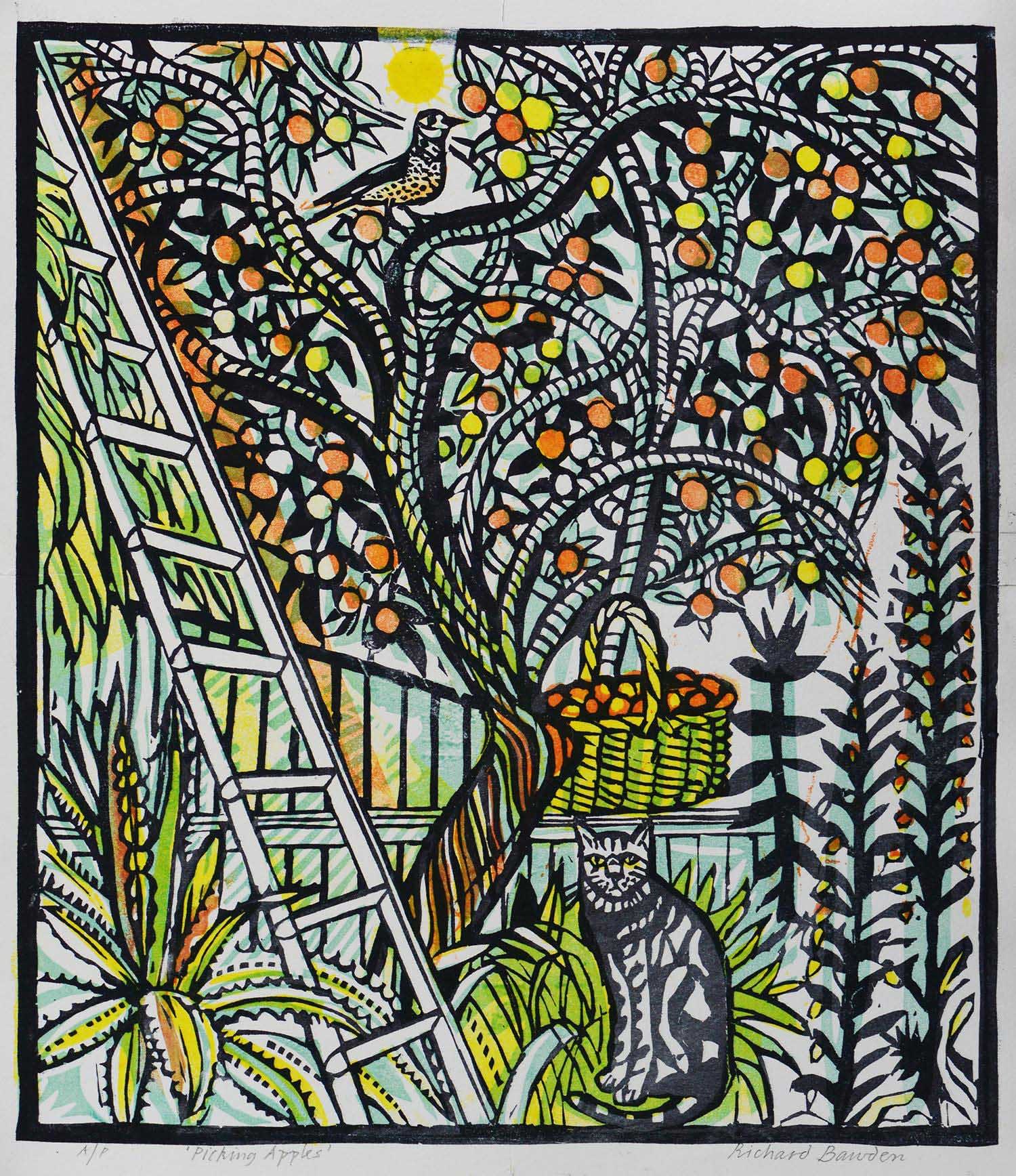
I have benefitted greatly throughout my career from this practical help and instruction. I don’t think I could have survived as an artist had I not made my own mounts and frames. And coping with these mechanical aspects of an artist's life has made me a much more practical person than I ever expected to be.
There was something aristocratic and courtly about Richard – his tall good looks, his unquestioning confidence in his abilities, and his lack of self-consciousness.
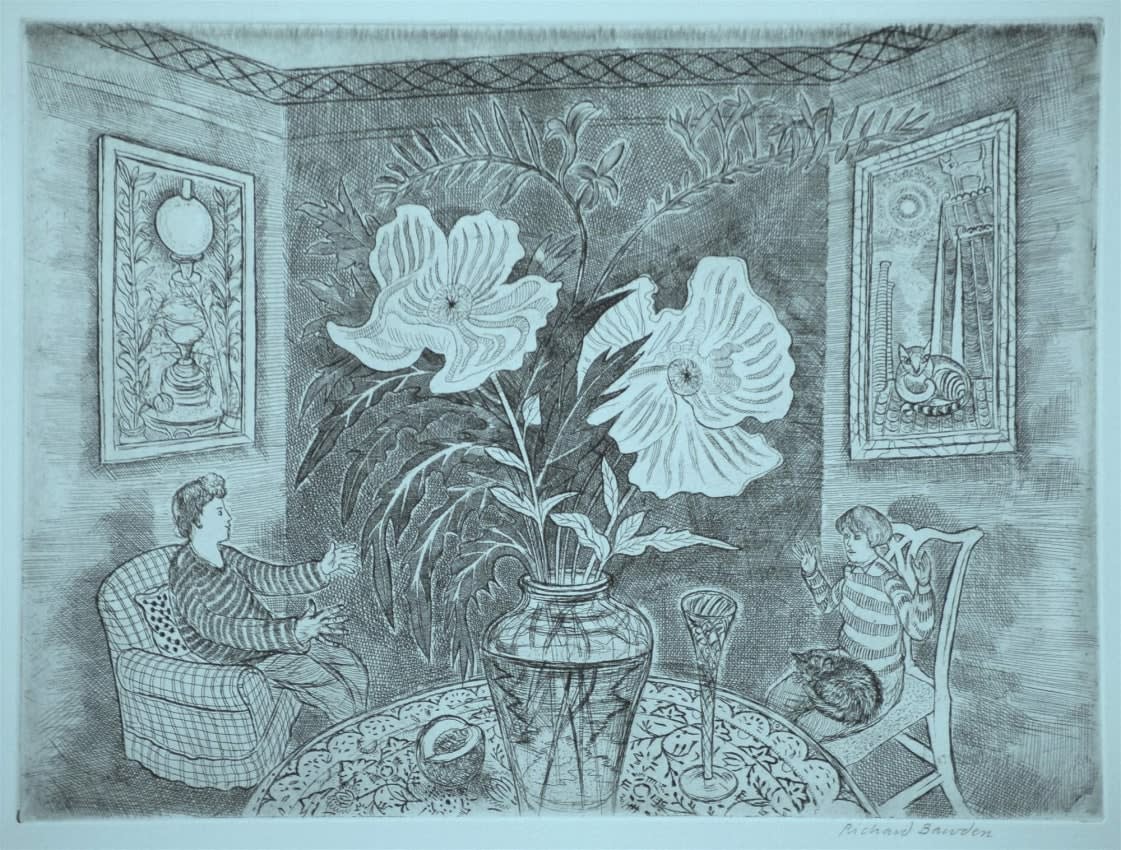
I left Walthamstow after a year and I didn't see Richard again for 30 years. Then he joined the Royal Watercolour Society, of which I had been a member for some time. I remember his acceptance speech. He had been a member of the sister society, the Painter Printmakers.
“I will have to scrape the printing ink from under my fingernails and concentrate on watercolour,” he said.
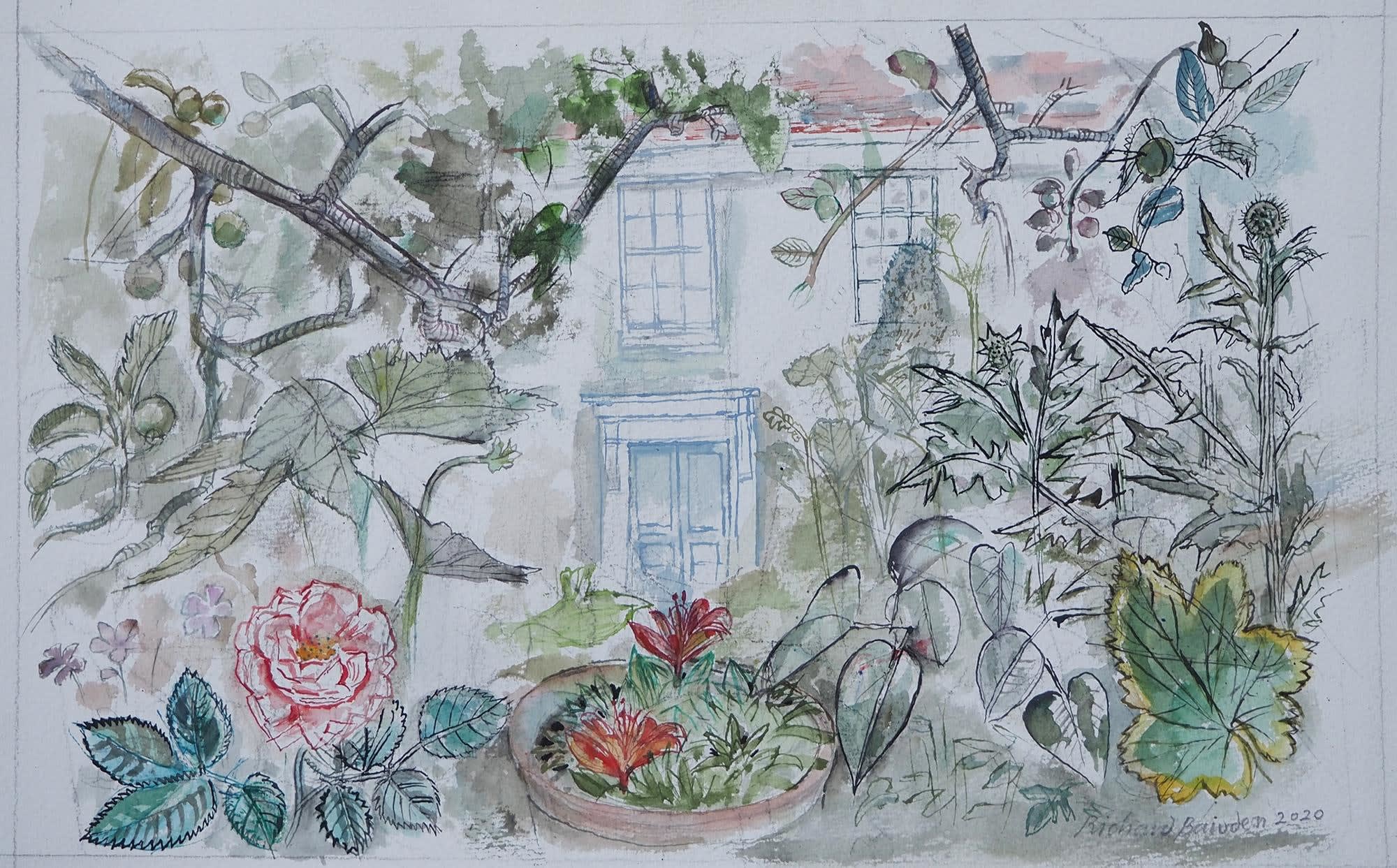
Richard's approach to watercolour was a linear, draughtsman's approach. He drew with a dip pen and washed colour over the drawing. This gave his pictures an incisive yet light quality.
He loved to draw intimate interiors with cats, cats.

His cats came to define a sort of languid, luxuriating domesticity. These creatures would stretch out over a rug, or curl up in a basket, or walk stiff-leggedly across a room, or sit in a window. Sue and I stayed at his and Hattie's flat in Sydney Steet near Marylebone and visited their house in Hadleigh in Suffolk. There I saw the interiors that appeared in his pictures. The house was completely devoted to art and craftsmanship. There were fine English pots and bowls on display in a round-topped cabinet,
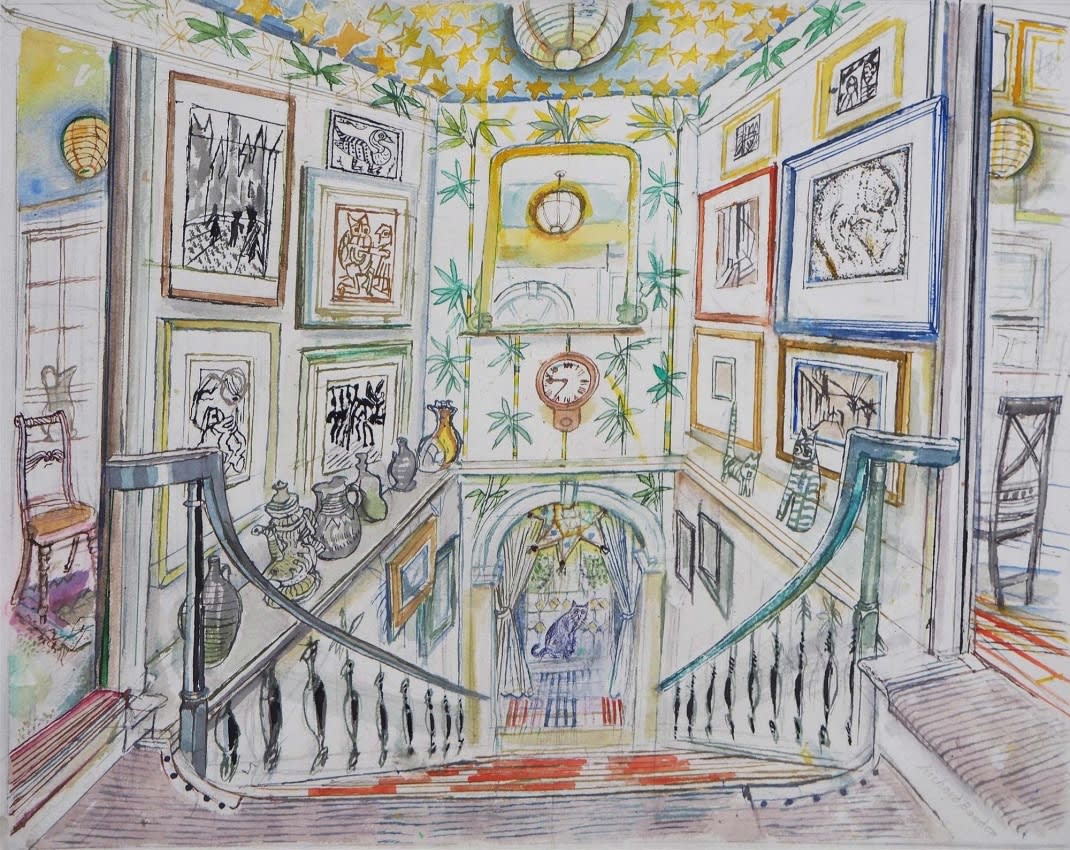
Staffordshire pottery pieces, and rich patterns everywhere, and Richard's printing presses in his workshop. In the garden was a wealth of plants, an apple tree, and an iron bench he had designed. It was a delightful home that Hattie and Richard had created, and Hattie's devotion to Richard for many years was a wonderful thing.
When I was RWS President, Richard came on to the executive committee, and I asked him to design a brochure to show what the society was about. He did this beautifully with a concertina-folding leaflet sketch using paintings by members, and from it, a splendid brochure was produced.
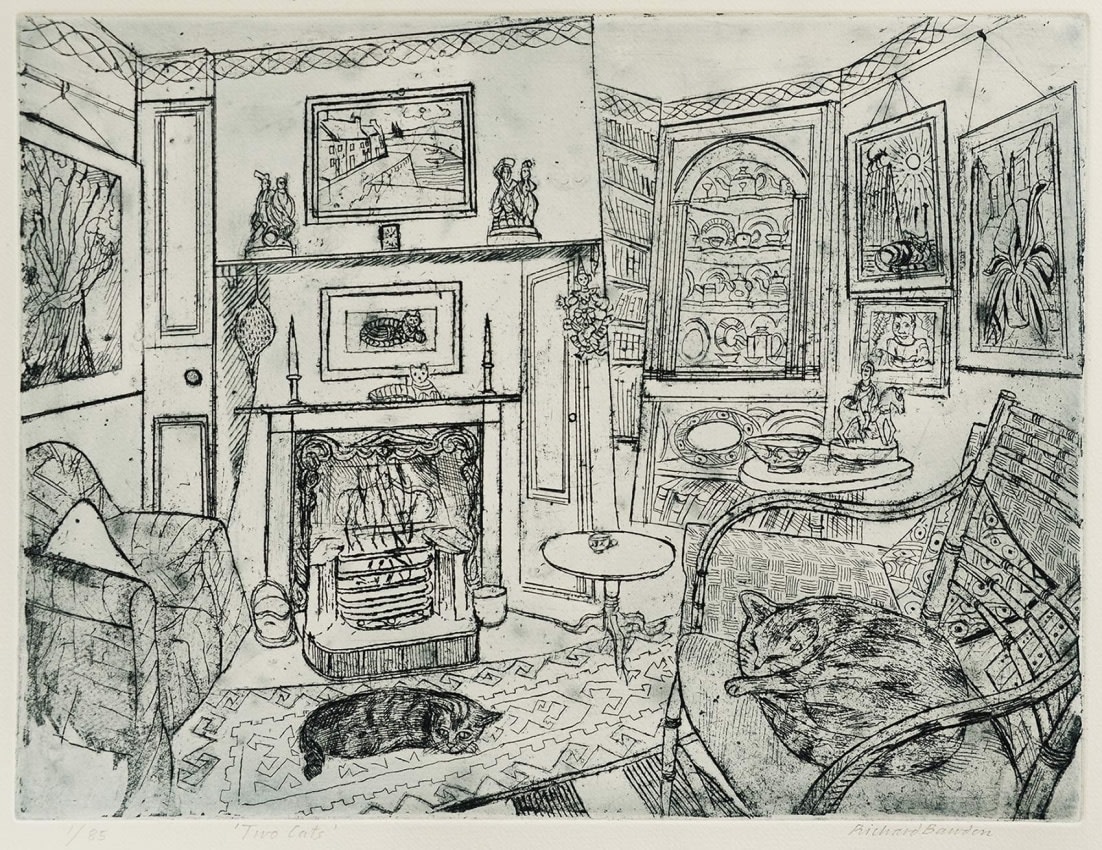
Also during my presidency, some of us went on an amazing trip to India where we were generously welcomed to stay at a luxurious hotel in Aurangabad, inland from Mumbai. There were extraordinary ancient Buddhist caves nearby and I remember Richard sitting and drawing there as visitors flocked around. I also have an amusing memory of Richard innocently offering his wrung-out bathing trunks to another artist who had suggested a swim in the hotel swimming pool. On the return journey, Richard's beloved Stanley knife which he'd had for many years was impounded by the Indian pre-flight check. I was able to retrieve this from the plastic basket, remove the blade, and then it was permitted on the plane.
Richard had a long and distinguished career with over 50 solo exhibitions and his paintings and prints bring delight to many people." Richard Sorrell
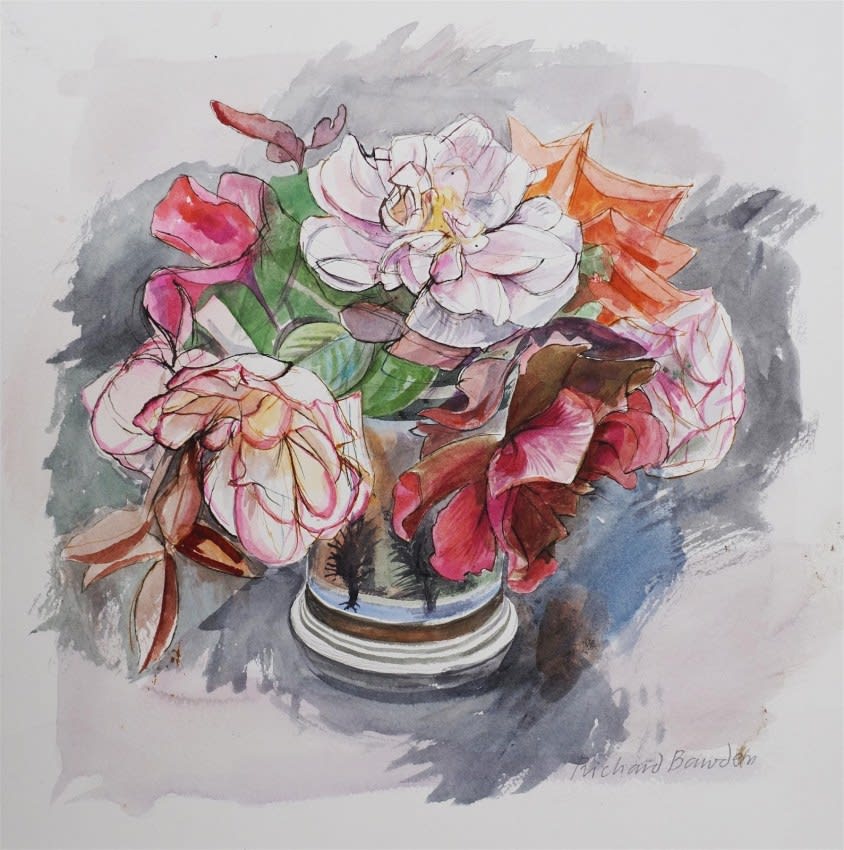
TO FIND OUT MORE . . .
- See Richard's NEAC artist profile page
- Read Richard Bawden's Wikipedia entry
- View a selection of Richard's work on the ArtUK website
- Watch a video of Richard Bawden's 80th birthday exhibition (2016)
- Read his Obituary in the Telegraph
- Read an article on the Blondes Fine Art website
